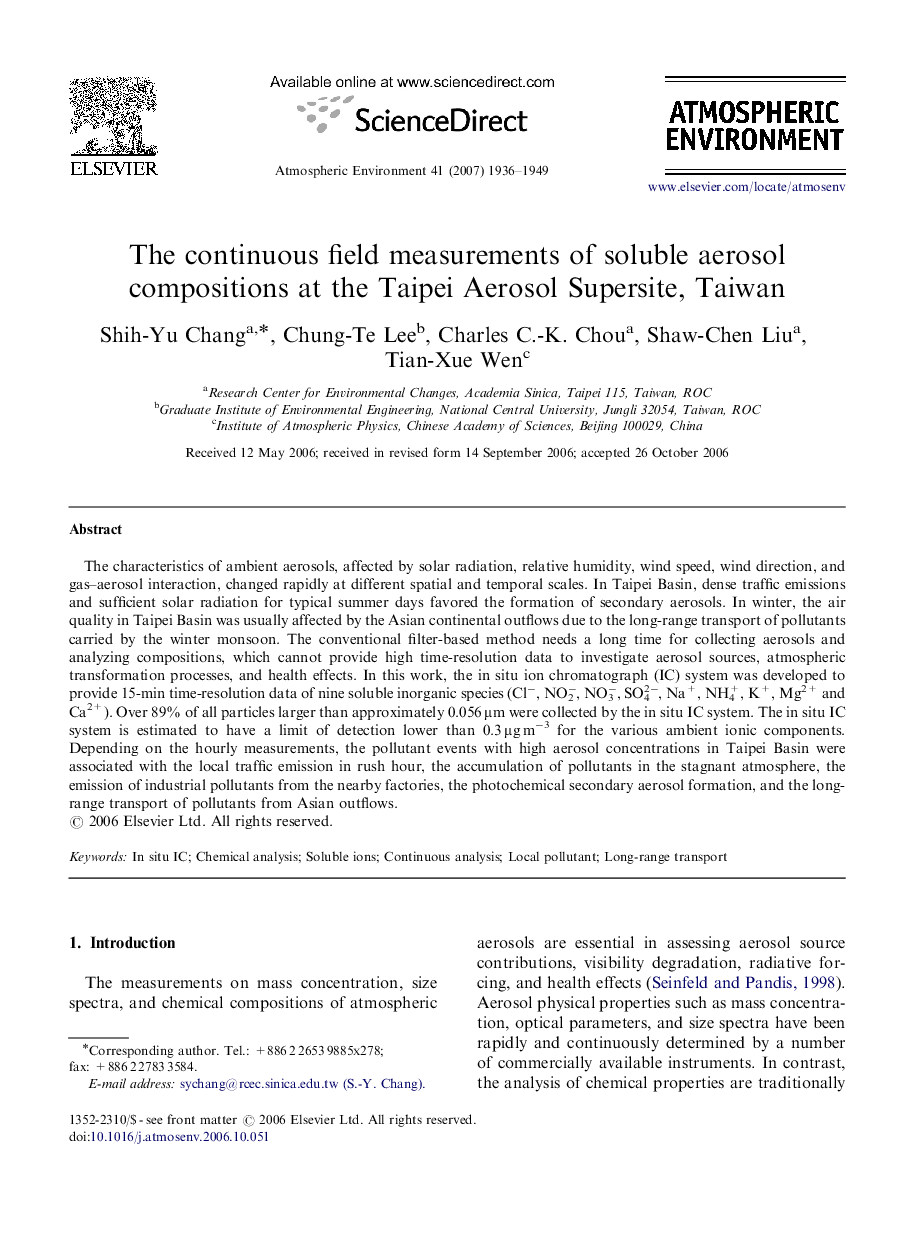| Article ID | Journal | Published Year | Pages | File Type |
|---|---|---|---|---|
| 4443852 | Atmospheric Environment | 2007 | 14 Pages |
The characteristics of ambient aerosols, affected by solar radiation, relative humidity, wind speed, wind direction, and gas–aerosol interaction, changed rapidly at different spatial and temporal scales. In Taipei Basin, dense traffic emissions and sufficient solar radiation for typical summer days favored the formation of secondary aerosols. In winter, the air quality in Taipei Basin was usually affected by the Asian continental outflows due to the long-range transport of pollutants carried by the winter monsoon. The conventional filter-based method needs a long time for collecting aerosols and analyzing compositions, which cannot provide high time-resolution data to investigate aerosol sources, atmospheric transformation processes, and health effects. In this work, the in situ ion chromatograph (IC) system was developed to provide 15-min time-resolution data of nine soluble inorganic species (Cl−, NO2−, NO3−, SO42−, Na+, NH4+, K+, Mg2+ and Ca2+). Over 89% of all particles larger than approximately 0.056 μm were collected by the in situ IC system. The in situ IC system is estimated to have a limit of detection lower than 0.3 μg m−3 for the various ambient ionic components. Depending on the hourly measurements, the pollutant events with high aerosol concentrations in Taipei Basin were associated with the local traffic emission in rush hour, the accumulation of pollutants in the stagnant atmosphere, the emission of industrial pollutants from the nearby factories, the photochemical secondary aerosol formation, and the long-range transport of pollutants from Asian outflows.
